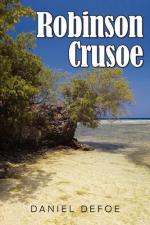|
This section contains 6,546 words (approx. 22 pages at 300 words per page) |

|
SOURCE: "Crusoe in Exile," in PMLA, Vol. 96, No. 3, May, 1981, pp. 363-74.
In the excerpt below, Seidel discusses the depiction of the exile in literature and the use and function of allegorical history in Robinson Crusoe.
In Ulysses Leopold Bloom poses an exile's question to another exile, a figure whom James Joyce calls the English Ulysses: "O, poor Robinson Crusoe, / How could you possibly do so?"1 Bloom's phrasing comes from a popular song that recalls a haunting moment in Robinson Crusoe when Defoe's hero, alone at that time for six years, hears the disembodied voice of his previously trained wild parrot, Poll, ask, "Robin, Robin, Robin Crusoe, poor Robin Crusoe, where are you Robin Crusoe? Where are you? Where have you been?"2 Bloom's "how" and the parrot's "where" are crucial questions for any exile, and the purpose of this essay is to suggest some potential answers to them.
When...
|
This section contains 6,546 words (approx. 22 pages at 300 words per page) |

|


